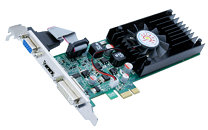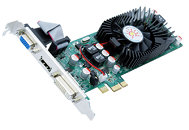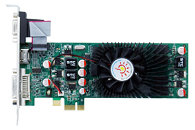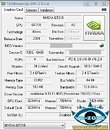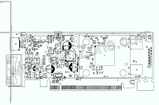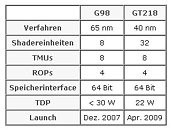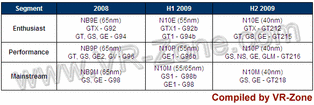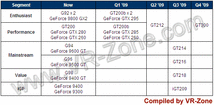Apr 13th, 2025 16:02 EDT
change timezone
Latest GPU Drivers
New Forum Posts
- What local LLM-s you use? (155)
- What is going to be your next tech upgrade? just curious :) (38)
- Dell Latitude 5420 - i7 1185G7 (5)
- What are you playing? (23377)
- Asrock z590 oc formula best cpu and memory speeds? (18)
- should global c-state be "enabled" instead of auto on am5 x3d processors? (25)
- [electronics] - STREAM DECK during gaming? (2)
- Upgrade for a GTX-1060 video card to a X570 AM4 MB w/ a Ryzen 9 3900X (17)
- Optical Disc Drive owners club (198)
- How to relubricate a fan and/or service a troublesome/noisy fan. (216)
Popular Reviews
- Thermaltake TR100 Review
- The Last Of Us Part 2 Performance Benchmark Review - 30 GPUs Compared
- TerraMaster F8 SSD Plus Review - Compact and quiet
- ASUS GeForce RTX 5080 TUF OC Review
- Zotac GeForce RTX 5070 Ti Amp Extreme Review
- ASRock Z890 Taichi OCF Review
- Sapphire Radeon RX 9070 XT Pulse Review
- Sapphire Radeon RX 9070 XT Nitro+ Review - Beating NVIDIA
- Upcoming Hardware Launches 2025 (Updated Apr 2025)
- AMD Ryzen 7 9800X3D Review - The Best Gaming Processor
Controversial News Posts
- NVIDIA GeForce RTX 5060 Ti 16 GB SKU Likely Launching at $499, According to Supply Chain Leak (181)
- MSI Doesn't Plan Radeon RX 9000 Series GPUs, Skips AMD RDNA 4 Generation Entirely (146)
- Microsoft Introduces Copilot for Gaming (124)
- NVIDIA Sends MSRP Numbers to Partners: GeForce RTX 5060 Ti 8 GB at $379, RTX 5060 Ti 16 GB at $429 (123)
- Nintendo Confirms That Switch 2 Joy-Cons Will Not Utilize Hall Effect Stick Technology (105)
- Over 200,000 Sold Radeon RX 9070 and RX 9070 XT GPUs? AMD Says No Number was Given (100)
- Nintendo Switch 2 Launches June 5 at $449.99 with New Hardware and Games (99)
- NVIDIA PhysX and Flow Made Fully Open-Source (77)
News Posts matching #GT218
Return to Keyword Browsing
SPARKLE Unveils GeForce 210/GT220/GT240 PCI Express x1 Graphics Cards
SPARKLE Computer Co., Ltd., the professional VGA card manufacturer and supplier, today unveils the SPARKLE GeForce 210/GT220/GT240 PCI Express x1 Graphics Cards, creating upgrade possibility for user's generic PC, providing 1080p HD video acceleration, DX10.1 gaming and premium Windows 7 experience for ordinary users.
With latest PCI Express technology, SPARKLE GeForce 210/GT220/GT240 PCI Express x1 Graphics Cards use PCI Express x1 bus type, they can be added on the motherboard which have at least one PCI Express x1 slot as the second graphics card, providing multiple monitors supports for computer users and certain industries, in addition to industrial users, they also support the upgrading of Intel Pine Trail motherboard which has only one PCI Express x1 slot.
With latest PCI Express technology, SPARKLE GeForce 210/GT220/GT240 PCI Express x1 Graphics Cards use PCI Express x1 bus type, they can be added on the motherboard which have at least one PCI Express x1 slot as the second graphics card, providing multiple monitors supports for computer users and certain industries, in addition to industrial users, they also support the upgrading of Intel Pine Trail motherboard which has only one PCI Express x1 slot.

Zotac Readies Five New ZBOX Series Nettops
Zotac is working on five new MAG nettops under its ZBOX series. Each of these "anywhere PCs" measure 18.8 (L) x 18.8 (W) x 4.4 (D) cm, and offer enough power for basic computing. The five new models are based on a variety of nettop platforms. As standard features, these have 160 GB HDDs, SDHC card reader, USB 2.0 and eSATA, Gigabit Ethernet and WiFi. Zotac's new nettops will debut next month. Specifications and expected price of each of these are as follows:
- HD-ID11 model - 1.66 GHz Atom 510 dual-core CPU / 1GB of RAM / Next-gen ION (GT218 GPU with 512MB dedicated memory) / $255
- HD-ND21 model - 1.3 GHz Processor SU4100 dual-core CPU /2GB of RAM / ION (first-gen) / $300
- HD-ND02 model - 1.6 GHz Atom 330 dual-core CPU / 2GB of RAM (DDR3) / ION (first-gen) / $217
- HD-AD01 model - 1.5 GHz Athlon X2 Neo L325 dual-core CPU / 2GB of RAM / ATI Radeon HD 3200 / $242.

Shuttle Unveils Barebone XS35 Mini-PC: 3.3 cm Thin and Energy-saving, HD Capable
Shuttle Inc., a leading developer and manufacturer of multi-form-factor solutions such as the world-famous XPC Mini-PC-Barebones, will be unveiling at this year's CeBIT in Hanover a new, ultra-compact PC platform which, at just 3.3 cm wide, is already HD-compatible.
The Shuttle Barebone XS35 is a Mini-PC in the 1-litre class which, thanks to its shape and the standardised VESA mounting interface, can be easily fitted behind flat panel displays and therefore does not take up any space. Intel's Atom D510 Dual Core Processor (2x 1.66 GHz) and the NM10 Express Chipset serve as the energy-saving hardware platform. A high-performance NVIDIA GT218 (ION2) graphics card provides streaming 3D and video playback. The HDMI connector allows for excellent sound and picture quality and connects the device to modern flat panel displays and large televisions easily.
The Shuttle Barebone XS35 is a Mini-PC in the 1-litre class which, thanks to its shape and the standardised VESA mounting interface, can be easily fitted behind flat panel displays and therefore does not take up any space. Intel's Atom D510 Dual Core Processor (2x 1.66 GHz) and the NM10 Express Chipset serve as the energy-saving hardware platform. A high-performance NVIDIA GT218 (ION2) graphics card provides streaming 3D and video playback. The HDMI connector allows for excellent sound and picture quality and connects the device to modern flat panel displays and large televisions easily.

Pinetrail Meets Discrete Graphics at Zotac
Zotac is trying out a new nettop design which makes use of discrete NVIDIA GT218 graphics processor with the second generation Atom platform (codenamed Pinetrail). By design, the Intel NM10 chipset which drives the new processor does not give out a PCI-Express x16 link, which leaves a lot to be learned about how Zotac goes about putting its ideas in motion. The company has displayed a non-functional prototype at this year's CES. The discrete graphics will give the nettop sufficient power to display 1080p graphics (which the platform can't, without an external HD video decoder). Zotac may place this as a successor to its MAG series nettops.

GeForce G 210 and GT 220 Surface
DirectX 11 isn't far from its being an official industrial standard. Both NVIDIA and AMD have high-end graphics processors supporting the standard in the works, though it is expected that by the time DirectX 11 reaches the masses, we will be into 2010. On the course, both companies have the time to perfect their designs on the new 40 nm silicon fabrication technology, which will build the first waves of DirectX 11 GPUs. One of the best ways of doing this is by building products based on the current architecture on the new process, and testing the foundry-companies' abilities to handle large market demands, while benefiting from low-manufacturing costs. Following AMD's introduction of the RV740, NVIDIA recently announced a new class of mGPUs based on the 40 nm process, and is having concrete plans of selling their desktop versions by this October.
Two of the important starting points for NVIDIA are the GT218 and GT216 graphics processors. The two have already being assigned mGPU branding of GeForce G 210M and GeForce GT 230M respectively. Their desktop versions are to be branded GeForce G 210 and GeForce GT 220 respectively. VR-Zone sourced the specifications of these GPUs, by running them on the upcoming GeForce 190.15 drivers.
Two of the important starting points for NVIDIA are the GT218 and GT216 graphics processors. The two have already being assigned mGPU branding of GeForce G 210M and GeForce GT 230M respectively. Their desktop versions are to be branded GeForce G 210 and GeForce GT 220 respectively. VR-Zone sourced the specifications of these GPUs, by running them on the upcoming GeForce 190.15 drivers.

NVIDIA Outsources 40 nm to Foundry Partners in Q2
With rival AMD having a production-grade 40 nm graphics processor, and UMC's recent announcement of being ready with a high-performance 40 nm manufacturing node, the conditions are increasingly favourable for NVIDIA to flag-off large-scale production of 40 nm GPUs. According to Chinese print-media Commercial Times, the company set its foundry outsourcing schedule for within Q2 2009, with TSMC and UMC being the regular foundry-partners.
Within this quarter, NVIDIA will start mass-production of the entry-level GT218, high-end mobile GT215 and mainstream desktop GT214 and GT216 GPUs. Additionally, the company may also expand its output for the 55 nm G200b high-end GPU.
Within this quarter, NVIDIA will start mass-production of the entry-level GT218, high-end mobile GT215 and mainstream desktop GT214 and GT216 GPUs. Additionally, the company may also expand its output for the 55 nm G200b high-end GPU.

RV790 Built on Improved 55 nm Manufacturing Process
It is clear now, that AMD's next performance GPU, the RV790 will be built on the 55 nm manufacturing process. To build on this information, sources tell German website Hardware-Infos that one of the factors that will help the new GPU perform better and run at higher clock-speeds than its predecessor, the RV770 does, is the newer improved 55 nm manufacturing process it will be built on. Going by the foundry-partner codename "55GT", the RV790 may get a little help from its superior silicon fabrication, which invariably makes it more expensive to manufacture.
One of the reasons behind why AMD is starting its 40 nm GPU lineup with a mainstream GPU such as RV740, is that the 40 nm process needs further development by foundry companies. It hasn't developed to the level that safely permits manufacturing high-end GPUs with stellar transistor-counts. For the same reason, NVIDIA's 40 nm conquest will be flagged off by the entry-level GT218 GPU. High-density circuits built on the current 40 nm process are known to be very prone to electrical leakage.
One of the reasons behind why AMD is starting its 40 nm GPU lineup with a mainstream GPU such as RV740, is that the 40 nm process needs further development by foundry companies. It hasn't developed to the level that safely permits manufacturing high-end GPUs with stellar transistor-counts. For the same reason, NVIDIA's 40 nm conquest will be flagged off by the entry-level GT218 GPU. High-density circuits built on the current 40 nm process are known to be very prone to electrical leakage.

NVIDIA GT218 Specifications Gain Clarity
Coming March, NVIDIA is expected to roll-out its first GPU built on the newer 40nm silicon fabrication process: the GT218. This GPU will spearhead the company's next generation of entry-level graphics cards. It will succeed the G98 GPU in the process. VR-Zone has access to some more details about this GPU apart from what we know (covered here).
The GT218 will go into making four SKUs, based on two primary NVIDIA reference PCB designs. VR-Zone accessed the schematics of the P692 PCB design codenamed D10M1-30, that reveal a half-height, SFF-friendly PCB that holds the GT218. The clock-speeds of the GPU are 550 MHz (core), 1,375 MHz (shader) and 800/1600 DDR MHz (memory). The GPU makes use of a 64-bit wide GDDR3 memory bus. The GPU supports output standards that include DVI, D-Sub and DisplayPort. The older report suggested this GPU to carry 32 stream processors, 8 TMUs and 4 ROPs, with a suggested TDP of around 22W. NVIDIA is looking to unveil this new GPU at the upcoming CeBIT even in March, followed by product launches in April.
The GT218 will go into making four SKUs, based on two primary NVIDIA reference PCB designs. VR-Zone accessed the schematics of the P692 PCB design codenamed D10M1-30, that reveal a half-height, SFF-friendly PCB that holds the GT218. The clock-speeds of the GPU are 550 MHz (core), 1,375 MHz (shader) and 800/1600 DDR MHz (memory). The GPU makes use of a 64-bit wide GDDR3 memory bus. The GPU supports output standards that include DVI, D-Sub and DisplayPort. The older report suggested this GPU to carry 32 stream processors, 8 TMUs and 4 ROPs, with a suggested TDP of around 22W. NVIDIA is looking to unveil this new GPU at the upcoming CeBIT even in March, followed by product launches in April.

NVIDIA Likely to Start 40nm GPU Conquest with GT218
As the industry moves closer to implementation of the 40nm silicon technology on graphics processors, some of the most complex electronic devices, both AMD and NVIDIA have their offerings in the works. While AMD already has prototypes taped out, NVIDIA seems to be taking its time, perhaps to perfect its products.
The green camp, as Hardware-Infos finds out, is likely to start its 40nm lineup with the GT218 graphics processor. With NVIDIA's internal coding scheme, the GT218 is an entry-level GPU. In its generation hierarchy, would be the GT215, GT216 (mainstream) and GT212 (high-end). The GT218 will succeed the G98 GPU that went into making the GeForce 9300 series. It will have 32 stream processors, 8 texture memory units, and 4 raster operations pipelines. It will continue to have a 64-bit wide memory bus. Despite the increase in transistor counts, the GPU ends up with a lower TDP, expected to be around 22W, as against the roughly 30W for the G98. The GT218 is slated for April, later this year.
The green camp, as Hardware-Infos finds out, is likely to start its 40nm lineup with the GT218 graphics processor. With NVIDIA's internal coding scheme, the GT218 is an entry-level GPU. In its generation hierarchy, would be the GT215, GT216 (mainstream) and GT212 (high-end). The GT218 will succeed the G98 GPU that went into making the GeForce 9300 series. It will have 32 stream processors, 8 texture memory units, and 4 raster operations pipelines. It will continue to have a 64-bit wide memory bus. Despite the increase in transistor counts, the GPU ends up with a lower TDP, expected to be around 22W, as against the roughly 30W for the G98. The GT218 is slated for April, later this year.

NVIDIA Mobile GPU Lineup for 2009 Charted
NVIDIA looks to have a complete lineup for mobile discrete graphics processors apart from their integrated graphics based chipsets that are gaining in popularity. VR-Zone compiled a list of GPUs slated for 2009. For some part, current-generation GPU architectures based on current manufacturing processes are noted, while the second half of 2009 will witness the introduction of GPUs based on the 40nm manufacturing processes, derived from the GT21x series GPUs.
Currently, NVIDIA mobile GPUs include derivatives from the 65nm G92, G94, G96 and G98 GPUs that make the lineup, top to bottom. In the first half of 2009, the same GPUs will be built on the newer 55nm manufacturing node and used in newer SKUs under N10E series for the enthusiast, N10P series for performance and N10M series for the mainstream segments. The GPU codenames will be simply suffixed with a "b" next to their company codenames and a "1" next to their product names (for example: GeForce 9800M GTX1). Desktop graphics cards are already being built on 55nm variants of the G9xb GPUs. In the second half of 2009, NVIDIA will use the GT212, GT215, GT216 and GT218 to build their mobile discrete graphics lineup. The GT212 is a high-end GPU, derivatives of which, will be used in the newer mobile GeForce GTX series in the enthusiast segment along with GT215 GPU, which will make it to the high-end GeForce GT, GeForce GS and GeForce GE series. The mid-range of the same series will be based on products derived from the GT216 series, in the performance segment. Finally, the GT218 GPU will go into making the value-mainstream products, the lower-end of the same GeForce GT, GS and GE series.
Currently, NVIDIA mobile GPUs include derivatives from the 65nm G92, G94, G96 and G98 GPUs that make the lineup, top to bottom. In the first half of 2009, the same GPUs will be built on the newer 55nm manufacturing node and used in newer SKUs under N10E series for the enthusiast, N10P series for performance and N10M series for the mainstream segments. The GPU codenames will be simply suffixed with a "b" next to their company codenames and a "1" next to their product names (for example: GeForce 9800M GTX1). Desktop graphics cards are already being built on 55nm variants of the G9xb GPUs. In the second half of 2009, NVIDIA will use the GT212, GT215, GT216 and GT218 to build their mobile discrete graphics lineup. The GT212 is a high-end GPU, derivatives of which, will be used in the newer mobile GeForce GTX series in the enthusiast segment along with GT215 GPU, which will make it to the high-end GeForce GT, GeForce GS and GeForce GE series. The mid-range of the same series will be based on products derived from the GT216 series, in the performance segment. Finally, the GT218 GPU will go into making the value-mainstream products, the lower-end of the same GeForce GT, GS and GE series.

TechPowerUp GPU-Z v0.3.1 Now Available
TechPowerUp announces the availability of GPU-Z version 0.3.1 for download. GPU-Z is our graphics sub-system information and monitoring utility that provides information on installed graphics hardware, their various specifications, provides real-time updates on their parameters such as clock-speeds, temperatures, fan-speeds, etc., all in a neat, tabbed user-interface, backed by our overclock validation system and an extensive video card BIOS database. Version 0.3.1 brings in a few important updates to the table, notably:
- Crash fix on systems without NVAPI (Win 2K, old NV drivers)
- Optimized AMD RV770 BIOS reading code (faster application startup)
- Added preliminary support for NVIDIA GT212, GT214, GT215, GT216, GT218
- Added support for NVIDIA Quadro FX 4700 X2, GTX 295, GTX 285
- Support for fan speed monitoring on ForceWare 180.xx and up
- Voltage monitoring for NVIDIA GT200

NVIDIA GPU Lineup for 2009 Tabled
The year 2008 has been eventful for the PC graphics industry. This is the year which, for the most of the part, saw some serious competition between NVIDIA and ATI. While pure horsepower and value are what determined product superiority, implementing new technologies is what looks to drive GPU makers in 2009. One of the first of these technologies is the introduction of the 40nm manufacturing process, which facilitates GPU makers to step-up transistor counts or even cut manufacturing costs. VR-Zone, based on a few documents it has access to, compiled a list of GPUs that NVIDIA could pull out of its hat in 2009.
To begin with, NVIDIA is expected to have a full-fledged lineup of GPUs top-to-bottom built on the 40nm fab process within 2009. Before it makes the move to the new fab process, the G200b, built on the 55nm fab process will be given a chance to hold the performance and enthusiast segment offerings by the company, in Q1. Come Q2, and the G200b will be succeeded by GT212. All that while, current G94, G96, G98 will hold the mainstream thru value segments, only to be replaced by GT214, GT216 and GT218 respectively in Q3. NVIDIA's gets a newer IGP too, the iGT209. NVIDIA looks to end the year with a newer high-end GPU, the GT300 to succeed GT212 in Q4.
To begin with, NVIDIA is expected to have a full-fledged lineup of GPUs top-to-bottom built on the 40nm fab process within 2009. Before it makes the move to the new fab process, the G200b, built on the 55nm fab process will be given a chance to hold the performance and enthusiast segment offerings by the company, in Q1. Come Q2, and the G200b will be succeeded by GT212. All that while, current G94, G96, G98 will hold the mainstream thru value segments, only to be replaced by GT214, GT216 and GT218 respectively in Q3. NVIDIA's gets a newer IGP too, the iGT209. NVIDIA looks to end the year with a newer high-end GPU, the GT300 to succeed GT212 in Q4.
Apr 13th, 2025 16:02 EDT
change timezone
Latest GPU Drivers
New Forum Posts
- What local LLM-s you use? (155)
- What is going to be your next tech upgrade? just curious :) (38)
- Dell Latitude 5420 - i7 1185G7 (5)
- What are you playing? (23377)
- Asrock z590 oc formula best cpu and memory speeds? (18)
- should global c-state be "enabled" instead of auto on am5 x3d processors? (25)
- [electronics] - STREAM DECK during gaming? (2)
- Upgrade for a GTX-1060 video card to a X570 AM4 MB w/ a Ryzen 9 3900X (17)
- Optical Disc Drive owners club (198)
- How to relubricate a fan and/or service a troublesome/noisy fan. (216)
Popular Reviews
- Thermaltake TR100 Review
- The Last Of Us Part 2 Performance Benchmark Review - 30 GPUs Compared
- TerraMaster F8 SSD Plus Review - Compact and quiet
- ASUS GeForce RTX 5080 TUF OC Review
- Zotac GeForce RTX 5070 Ti Amp Extreme Review
- ASRock Z890 Taichi OCF Review
- Sapphire Radeon RX 9070 XT Pulse Review
- Sapphire Radeon RX 9070 XT Nitro+ Review - Beating NVIDIA
- Upcoming Hardware Launches 2025 (Updated Apr 2025)
- AMD Ryzen 7 9800X3D Review - The Best Gaming Processor
Controversial News Posts
- NVIDIA GeForce RTX 5060 Ti 16 GB SKU Likely Launching at $499, According to Supply Chain Leak (181)
- MSI Doesn't Plan Radeon RX 9000 Series GPUs, Skips AMD RDNA 4 Generation Entirely (146)
- Microsoft Introduces Copilot for Gaming (124)
- NVIDIA Sends MSRP Numbers to Partners: GeForce RTX 5060 Ti 8 GB at $379, RTX 5060 Ti 16 GB at $429 (123)
- Nintendo Confirms That Switch 2 Joy-Cons Will Not Utilize Hall Effect Stick Technology (105)
- Over 200,000 Sold Radeon RX 9070 and RX 9070 XT GPUs? AMD Says No Number was Given (100)
- Nintendo Switch 2 Launches June 5 at $449.99 with New Hardware and Games (99)
- NVIDIA PhysX and Flow Made Fully Open-Source (77)
